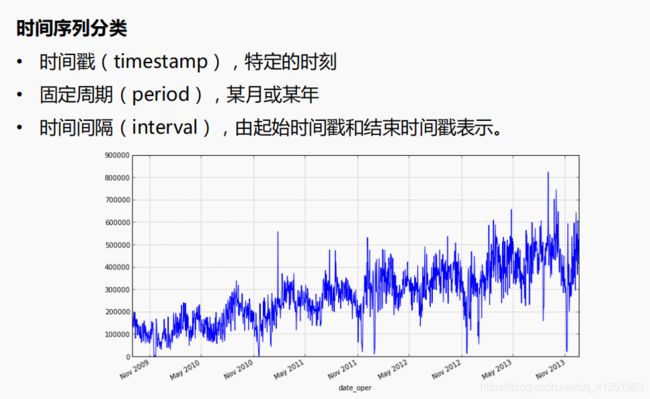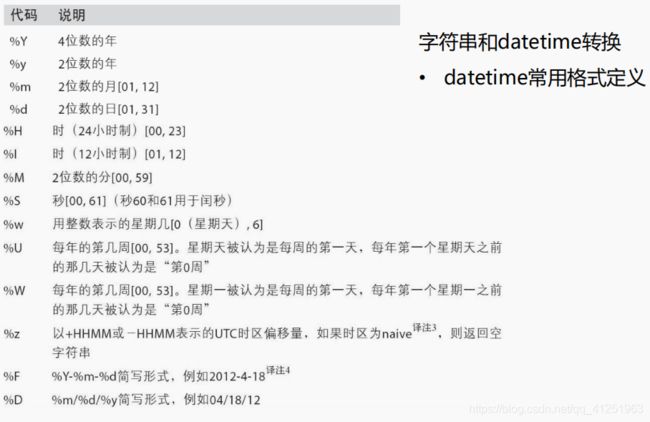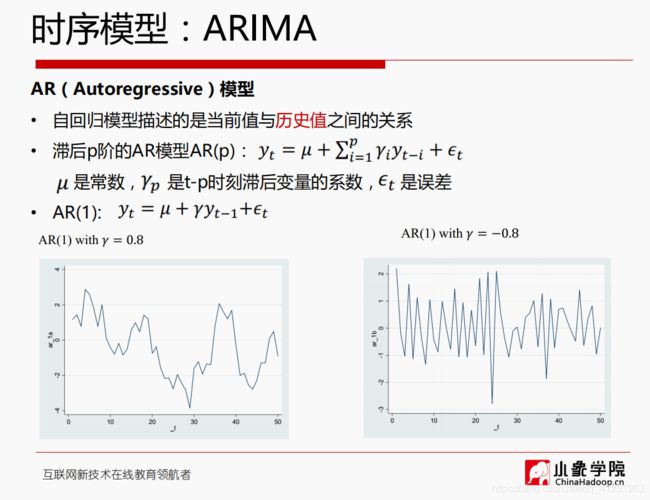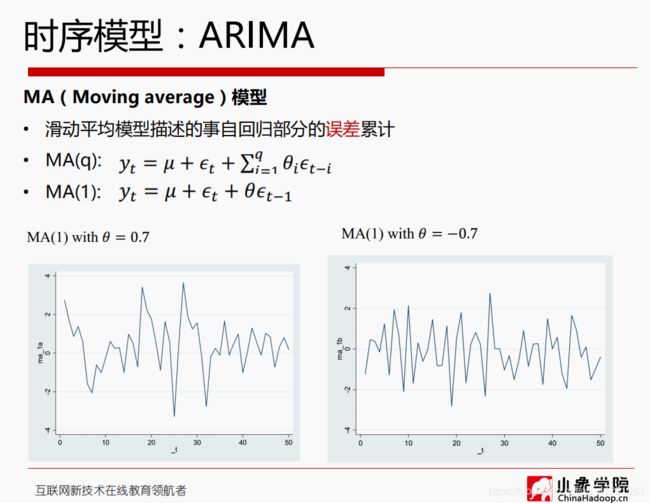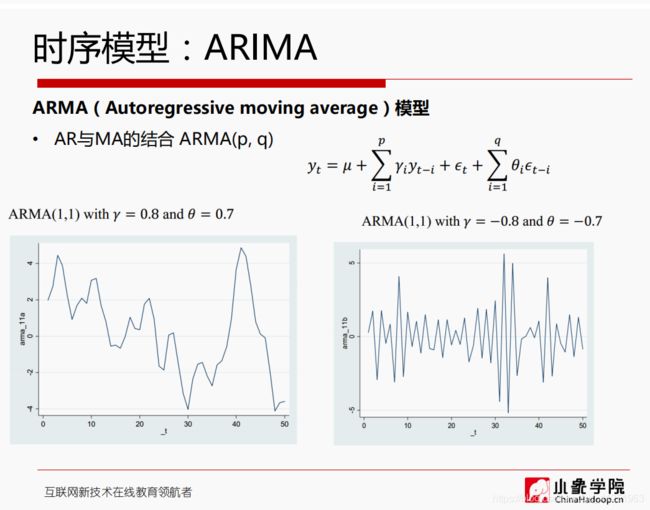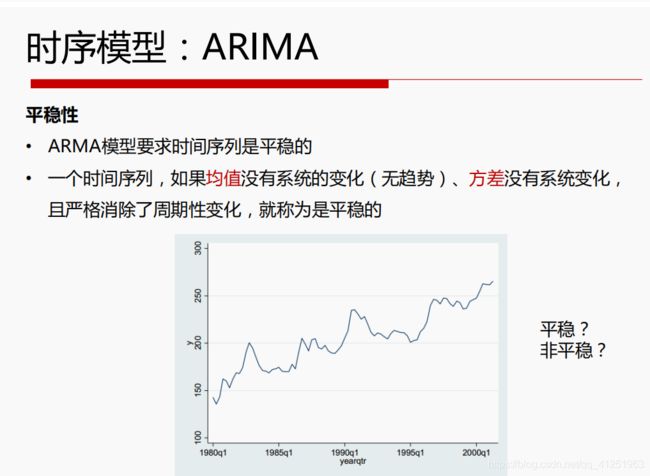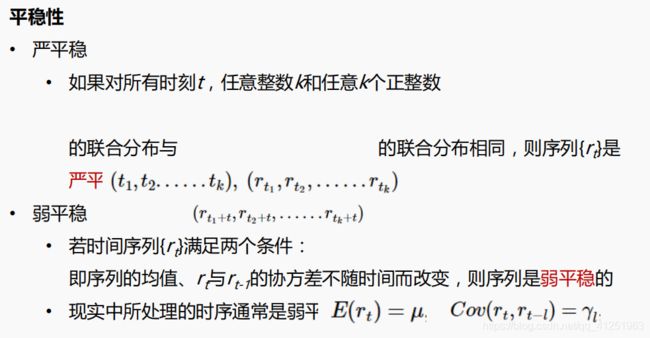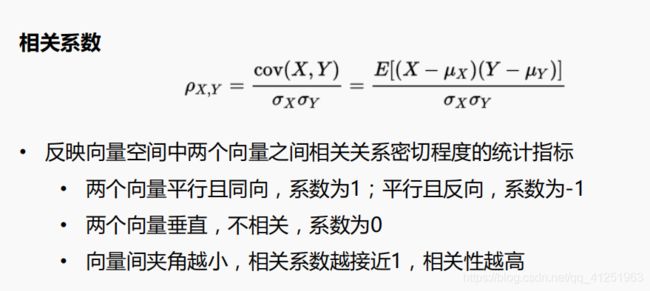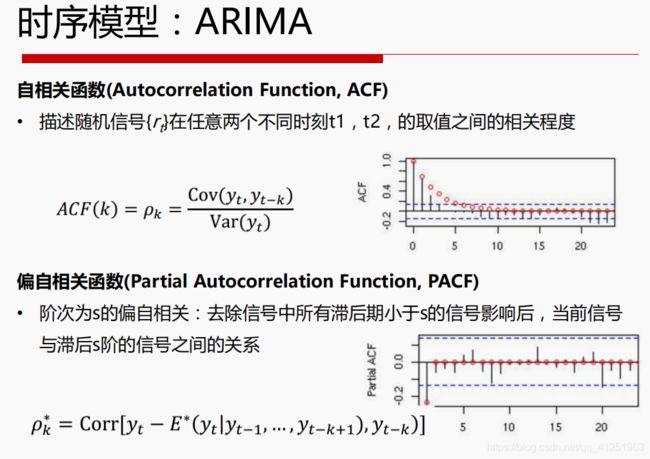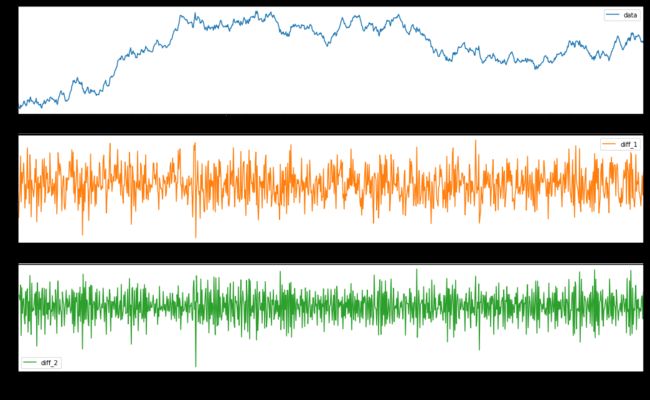【Python数据分析学习笔记Day5】(五)时间序列数据分析
Python的日期和时间处理及操作
python中日期和时间格式化输出的方法
https://blog.csdn.net/qq_41251963/article/details/81874047
Python的日期和时间处理
datetime模块
from datetime import datetime
now = datetime.now()
print(now)
2020-02-06 10:10:53.182169
print('年: {}, 月: {}, 日: {}'.format(now.year, now.month, now.day))
年: 2020, 月: 2, 日: 6
diff = datetime(2020, 3, 4, 17) - datetime(1998, 2, 18, 15)
print(type(diff))
print(diff)
print('经历了{}天, {}秒。'.format(diff.days, diff.seconds))
8050 days, 2:00:00
经历了8050天, 7200秒。
字符串和datetime转换
datetime -> str
# str()
dt_obj = datetime(2020, 2, 2)
str_obj = str(dt_obj)
print(type(str_obj))
print(str_obj)
2020-02-02 00:00:00
# datetime.strftime()
str_obj2 = dt_obj.strftime('%d-%m-%Y')
print(str_obj2)
02-02-2020
str -> datetime
# strptime
dt_str = '2020-02-02'
dt_obj2 = datetime.strptime(dt_str, '%Y-%m-%d')
print(type(dt_obj2))
print(dt_obj2)
2020-02-02 00:00:00
# dateutil.parser.parse
from dateutil.parser import parse
dt_str2 = '2020/02/02'
dt_obj3 = parse(dt_str2)
print(type(dt_obj3))
print(dt_obj3)
2020-02-02 00:00:00
# pd.to_datetime
import pandas as pd
s_obj = pd.Series(['2020/02/01', '2020/02/02', '2020-02-02', '2020-02-02'], name='course_time')
print(s_obj)
0 2020/02/01
1 2020/02/02
2 2020-02-02
3 2020-02-02
Name: course_time, dtype: object
s_obj2 = pd.to_datetime(s_obj)
print(s_obj2)
0 2020-02-01
1 2020-02-02
2 2020-02-02
3 2020-02-02
Name: course_time, dtype: datetime64[ns]
# 处理缺失值
s_obj3 = pd.Series(['2020/02/01', '2020/02/02', '2020-02-03', '2020-02-04'] + [None],
name='course_time')
print(s_obj3)
0 2020/02/01
1 2020/02/02
2 2020-02-03
3 2020-02-04
4 None
Name: course_time, dtype: object
s_obj4 = pd.to_datetime(s_obj3)
print(s_obj4) # NAT-> Not a Time
Pandas的时间序列处理
创建
from datetime import datetime
import pandas as pd
import numpy as np
# 指定index为datetime的list
date_list = [datetime(2020, 2, 1), datetime(2020, 2, 2),
datetime(2020, 2, 3), datetime(2020, 2, 4),
datetime(2020, 2, 5), datetime(2020, 2, 6)]
time_s = pd.Series(np.random.randn(6), index=date_list)
print(time_s)
print(type(time_s.index))
2020-02-01 -0.281807
2020-02-02 -1.003597
2020-02-03 0.368373
2020-02-04 0.931855
2020-02-05 -1.004612
2020-02-06 0.686188
dtype: float64
# pd.date_range()
dates = pd.date_range('2020-02-01', # 起始日期
periods=5, # 周期
freq='W-SAT') # 频率
print(dates)
print(pd.Series(np.random.randn(5), index=dates))
DatetimeIndex(['2020-02-01', '2020-02-08', '2020-02-15', '2020-02-22',
'2020-02-29'],
dtype='datetime64[ns]', freq='W-SAT')
2020-02-01 -0.710459
2020-02-08 -0.361540
2020-02-15 0.202963
2020-02-22 0.229415
2020-02-29 0.480912
Freq: W-SAT, dtype: float64
索引
# 索引位置
print(time_s[0])
-0.2818071926870335
# 索引值
print(time_s[datetime(2020, 2, 1)])
-0.2818071926870335
# 可以被解析的日期字符串
print(time_s['2020/02/01'])
-0.2818071926870335
# 按“年份”、“月份”索引
print(time_s['2020-2'])
2020-02-01 -0.281807
2020-02-02 -1.003597
2020-02-03 0.368373
2020-02-04 0.931855
2020-02-05 -1.004612
2020-02-06 0.686188
dtype: float64
# 切片操作
print(time_s['2020-2-2':])
2020-02-02 -1.003597
2020-02-03 0.368373
2020-02-04 0.931855
2020-02-05 -1.004612
2020-02-06 0.686188
dtype: float64
过滤
time_s.truncate(before='2020-2-2')
2020-02-02 -1.003597
2020-02-03 0.368373
2020-02-04 0.931855
2020-02-05 -1.004612
2020-02-06 0.686188
dtype: float64
time_s.truncate(after='2020-2-2')
2020-02-01 -0.281807
2020-02-02 -1.003597
dtype: float64
生成日期范围
# 传入开始、结束日期,默认生成的该时间段的时间点是按天计算的
date_index = pd.date_range('2020/01/01', '2020/02/01')
print(date_index)
DatetimeIndex(['2020-01-01', '2020-01-02', '2020-01-03', '2020-01-04',
'2020-01-05', '2020-01-06', '2020-01-07', '2020-01-08',
'2020-01-09', '2020-01-10', '2020-01-11', '2020-01-12',
'2020-01-13', '2020-01-14', '2020-01-15', '2020-01-16',
'2020-01-17', '2020-01-18', '2020-01-19', '2020-01-20',
'2020-01-21', '2020-01-22', '2020-01-23', '2020-01-24',
'2020-01-25', '2020-01-26', '2020-01-27', '2020-01-28',
'2020-01-29', '2020-01-30', '2020-01-31', '2020-02-01'],
dtype='datetime64[ns]', freq='D')
# 只传入开始或结束日期,还需要传入时间段
print(pd.date_range(start='2020/01/01', periods=10))
DatetimeIndex(['2020-01-01', '2020-01-02', '2020-01-03', '2020-01-04',
'2020-01-05', '2020-01-06', '2020-01-07', '2020-01-08',
'2020-01-09', '2020-01-10'],
dtype='datetime64[ns]', freq='D')
print(pd.date_range(end='2020/02/10', periods=10))
DatetimeIndex(['2020-02-01', '2020-02-02', '2020-02-03', '2020-02-04',
'2020-02-05', '2020-02-06', '2020-02-07', '2020-02-08',
'2020-02-09', '2020-02-10'],
dtype='datetime64[ns]', freq='D')
# 规范化时间戳
print(pd.date_range(start='2020/02/01 12:13:14', periods=10))
print(pd.date_range(start='2020/02/01 12:13:14', periods=10, normalize=True))
DatetimeIndex(['2020-02-01 12:13:14', '2020-02-02 12:13:14',
'2020-02-03 12:13:14', '2020-02-04 12:13:14',
'2020-02-05 12:13:14', '2020-02-06 12:13:14',
'2020-02-07 12:13:14', '2020-02-08 12:13:14',
'2020-02-09 12:13:14', '2020-02-10 12:13:14'],
dtype='datetime64[ns]', freq='D')
DatetimeIndex(['2020-02-01', '2020-02-02', '2020-02-03', '2020-02-04',
'2020-02-05', '2020-02-06', '2020-02-07', '2020-02-08',
'2020-02-09', '2020-02-10'],
dtype='datetime64[ns]', freq='D')
频率与偏移量
print(pd.date_range('2020/01/01', '2020/02/02', freq='2D'))
DatetimeIndex(['2020-01-01', '2020-01-03', '2020-01-05', '2020-01-07',
'2020-01-09', '2020-01-11', '2020-01-13', '2020-01-15',
'2020-01-17', '2020-01-19', '2020-01-21', '2020-01-23',
'2020-01-25', '2020-01-27', '2020-01-29', '2020-01-31',
'2020-02-02'],
dtype='datetime64[ns]', freq='2D')
# 偏移量通过加法连接
sum_offset = pd.tseries.offsets.Week(2) + pd.tseries.offsets.Hour(12)
print(sum_offset)
print(pd.date_range('2020/01/01', '2020/02/02', freq=sum_offset))
14 days 12:00:00
DatetimeIndex(['2020-01-01 00:00:00', '2020-01-15 12:00:00',
'2020-01-30 00:00:00'],
dtype='datetime64[ns]', freq='348H')
移动数据
ts = pd.Series(np.random.randn(5), index=pd.date_range('20200202', periods=5, freq='W-SAT'))
print(ts)
2020-02-08 -0.135310
2020-02-15 -0.471143
2020-02-22 1.176270
2020-02-29 -1.167991
2020-03-07 0.381687
Freq: W-SAT, dtype: float64
# 时间数据重采样
resample
import pandas as pd
import numpy as np
date_rng = pd.date_range('20200101', periods=100, freq='D')
ser_obj = pd.Series(range(len(date_rng)), index=date_rng)
print(ser_obj.head(10))
2020-01-01 0
2020-01-02 1
2020-01-03 2
2020-01-04 3
2020-01-05 4
2020-01-06 5
2020-01-07 6
2020-01-08 7
2020-01-09 8
2020-01-10 9
Freq: D, dtype: int32
# 统计每个月的数据总和
resample_month_sum = ser_obj.resample('M').sum()
# 统计每个月的数据平均
resample_month_mean = ser_obj.resample('M').mean()
print('按月求和:', resample_month_sum)
print('按月求均值:', resample_month_mean)
按月求和: 2020-01-31 465
2020-02-29 1305
2020-03-31 2325
2020-04-30 855
Freq: M, dtype: int32
按月求均值: 2020-01-31 15
2020-02-29 45
2020-03-31 75
2020-04-30 95
Freq: M, dtype: int32
降采样
# 将数据聚合到5天的频率
five_day_sum_sample = ser_obj.resample('5D').sum()
five_day_mean_sample = ser_obj.resample('5D').mean()
five_day_ohlc_sample = ser_obj.resample('5D').ohlc()
print('降采样,sum')
print(five_day_sum_sample)
降采样,sum
2020-01-01 10
2020-01-06 35
2020-01-11 60
2020-01-16 85
2020-01-21 110
2020-01-26 135
2020-01-31 160
2020-02-05 185
2020-02-10 210
2020-02-15 235
2020-02-20 260
2020-02-25 285
2020-03-01 310
2020-03-06 335
2020-03-11 360
2020-03-16 385
2020-03-21 410
2020-03-26 435
2020-03-31 460
2020-04-05 485
Freq: 5D, dtype: int32
print('降采样,mean')
print(five_day_mean_sample)
降采样,mean
2020-01-01 2
2020-01-06 7
2020-01-11 12
2020-01-16 17
2020-01-21 22
2020-01-26 27
2020-01-31 32
2020-02-05 37
2020-02-10 42
2020-02-15 47
2020-02-20 52
2020-02-25 57
2020-03-01 62
2020-03-06 67
2020-03-11 72
2020-03-16 77
2020-03-21 82
2020-03-26 87
2020-03-31 92
2020-04-05 97
Freq: 5D, dtype: int32
print('降采样,ohlc')
print(five_day_ohlc_sample)
降采样,ohlc
open high low close
2020-01-01 0 4 0 4
2020-01-06 5 9 5 9
2020-01-11 10 14 10 14
2020-01-16 15 19 15 19
2020-01-21 20 24 20 24
2020-01-26 25 29 25 29
2020-01-31 30 34 30 34
2020-02-05 35 39 35 39
2020-02-10 40 44 40 44
2020-02-15 45 49 45 49
2020-02-20 50 54 50 54
2020-02-25 55 59 55 59
2020-03-01 60 64 60 64
2020-03-06 65 69 65 69
2020-03-11 70 74 70 74
2020-03-16 75 79 75 79
2020-03-21 80 84 80 84
2020-03-26 85 89 85 89
2020-03-31 90 94 90 94
2020-04-05 95 99 95 99
# 使用groupby降采样
print(ser_obj.groupby(lambda x: x.month).sum())
1 465
2 1305
3 2325
4 855
dtype: int32
print(ser_obj.groupby(lambda x: x.weekday).sum())
0 707
1 721
2 735
3 750
4 665
5 679
6 693
dtype: int32
升采样
df = pd.DataFrame(np.random.randn(5, 3),
index=pd.date_range('20200101', periods=5, freq='W-MON'),
columns=['S1', 'S2', 'S3'])
print(df)
S1 S2 S3
2020-01-06 -0.372485 0.789056 0.439189
2020-01-13 0.031862 -0.009087 -0.429152
2020-01-20 0.154019 -0.012903 -1.700997
2020-01-27 0.683402 -1.935432 -1.187806
2020-02-03 -0.208630 -0.115609 0.300115
# 直接重采样会产生空值
print(df.resample('D').asfreq())
S1 S2 S3
2020-01-06 -0.372485 0.789056 0.439189
2020-01-07 NaN NaN NaN
2020-01-08 NaN NaN NaN
2020-01-09 NaN NaN NaN
2020-01-10 NaN NaN NaN
2020-01-11 NaN NaN NaN
2020-01-12 NaN NaN NaN
2020-01-13 0.031862 -0.009087 -0.429152
2020-01-14 NaN NaN NaN
2020-01-15 NaN NaN NaN
2020-01-16 NaN NaN NaN
2020-01-17 NaN NaN NaN
2020-01-18 NaN NaN NaN
2020-01-19 NaN NaN NaN
2020-01-20 0.154019 -0.012903 -1.700997
2020-01-21 NaN NaN NaN
2020-01-22 NaN NaN NaN
2020-01-23 NaN NaN NaN
2020-01-24 NaN NaN NaN
2020-01-25 NaN NaN NaN
2020-01-26 NaN NaN NaN
2020-01-27 0.683402 -1.935432 -1.187806
2020-01-28 NaN NaN NaN
2020-01-29 NaN NaN NaN
2020-01-30 NaN NaN NaN
2020-01-31 NaN NaN NaN
2020-02-01 NaN NaN NaN
2020-02-02 NaN NaN NaN
2020-02-03 -0.208630 -0.115609 0.300115
#ffill
print(df.resample('D').ffill(2))
S1 S2 S3
2020-01-06 -0.372485 0.789056 0.439189
2020-01-07 -0.372485 0.789056 0.439189
2020-01-08 -0.372485 0.789056 0.439189
2020-01-09 NaN NaN NaN
2020-01-10 NaN NaN NaN
2020-01-11 NaN NaN NaN
2020-01-12 NaN NaN NaN
2020-01-13 0.031862 -0.009087 -0.429152
2020-01-14 0.031862 -0.009087 -0.429152
2020-01-15 0.031862 -0.009087 -0.429152
2020-01-16 NaN NaN NaN
2020-01-17 NaN NaN NaN
2020-01-18 NaN NaN NaN
2020-01-19 NaN NaN NaN
2020-01-20 0.154019 -0.012903 -1.700997
2020-01-21 0.154019 -0.012903 -1.700997
2020-01-22 0.154019 -0.012903 -1.700997
2020-01-23 NaN NaN NaN
2020-01-24 NaN NaN NaN
2020-01-25 NaN NaN NaN
2020-01-26 NaN NaN NaN
2020-01-27 0.683402 -1.935432 -1.187806
2020-01-28 0.683402 -1.935432 -1.187806
2020-01-29 0.683402 -1.935432 -1.187806
2020-01-30 NaN NaN NaN
2020-01-31 NaN NaN NaN
2020-02-01 NaN NaN NaN
2020-02-02 NaN NaN NaN
2020-02-03 -0.208630 -0.115609 0.300115
print(df.resample('D').bfill())
S1 S2 S3
2020-01-06 -0.372485 0.789056 0.439189
2020-01-07 0.031862 -0.009087 -0.429152
2020-01-08 0.031862 -0.009087 -0.429152
2020-01-09 0.031862 -0.009087 -0.429152
2020-01-10 0.031862 -0.009087 -0.429152
2020-01-11 0.031862 -0.009087 -0.429152
2020-01-12 0.031862 -0.009087 -0.429152
2020-01-13 0.031862 -0.009087 -0.429152
2020-01-14 0.154019 -0.012903 -1.700997
2020-01-15 0.154019 -0.012903 -1.700997
2020-01-16 0.154019 -0.012903 -1.700997
2020-01-17 0.154019 -0.012903 -1.700997
2020-01-18 0.154019 -0.012903 -1.700997
2020-01-19 0.154019 -0.012903 -1.700997
2020-01-20 0.154019 -0.012903 -1.700997
2020-01-21 0.683402 -1.935432 -1.187806
2020-01-22 0.683402 -1.935432 -1.187806
2020-01-23 0.683402 -1.935432 -1.187806
2020-01-24 0.683402 -1.935432 -1.187806
2020-01-25 0.683402 -1.935432 -1.187806
2020-01-26 0.683402 -1.935432 -1.187806
2020-01-27 0.683402 -1.935432 -1.187806
2020-01-28 -0.208630 -0.115609 0.300115
2020-01-29 -0.208630 -0.115609 0.300115
2020-01-30 -0.208630 -0.115609 0.300115
2020-01-31 -0.208630 -0.115609 0.300115
2020-02-01 -0.208630 -0.115609 0.300115
2020-02-02 -0.208630 -0.115609 0.300115
2020-02-03 -0.208630 -0.115609 0.300115
print(df.resample('D').fillna('ffill'))
S1 S2 S3
2020-01-06 -0.372485 0.789056 0.439189
2020-01-07 -0.372485 0.789056 0.439189
2020-01-08 -0.372485 0.789056 0.439189
2020-01-09 -0.372485 0.789056 0.439189
2020-01-10 -0.372485 0.789056 0.439189
2020-01-11 -0.372485 0.789056 0.439189
2020-01-12 -0.372485 0.789056 0.439189
2020-01-13 0.031862 -0.009087 -0.429152
2020-01-14 0.031862 -0.009087 -0.429152
2020-01-15 0.031862 -0.009087 -0.429152
2020-01-16 0.031862 -0.009087 -0.429152
2020-01-17 0.031862 -0.009087 -0.429152
2020-01-18 0.031862 -0.009087 -0.429152
2020-01-19 0.031862 -0.009087 -0.429152
2020-01-20 0.154019 -0.012903 -1.700997
2020-01-21 0.154019 -0.012903 -1.700997
2020-01-22 0.154019 -0.012903 -1.700997
2020-01-23 0.154019 -0.012903 -1.700997
2020-01-24 0.154019 -0.012903 -1.700997
2020-01-25 0.154019 -0.012903 -1.700997
2020-01-26 0.154019 -0.012903 -1.700997
2020-01-27 0.683402 -1.935432 -1.187806
2020-01-28 0.683402 -1.935432 -1.187806
2020-01-29 0.683402 -1.935432 -1.187806
2020-01-30 0.683402 -1.935432 -1.187806
2020-01-31 0.683402 -1.935432 -1.187806
2020-02-01 0.683402 -1.935432 -1.187806
2020-02-02 0.683402 -1.935432 -1.187806
2020-02-03 -0.208630 -0.115609 0.300115
print(df.resample('D').interpolate('linear'))
S1 S2 S3
2020-01-06 -0.372485 0.789056 0.439189
2020-01-07 -0.314721 0.675036 0.315140
2020-01-08 -0.256957 0.561015 0.191092
2020-01-09 -0.199193 0.446995 0.067043
2020-01-10 -0.141430 0.332975 -0.057006
2020-01-11 -0.083666 0.218954 -0.181054
2020-01-12 -0.025902 0.104934 -0.305103
2020-01-13 0.031862 -0.009087 -0.429152
2020-01-14 0.049313 -0.009632 -0.610844
2020-01-15 0.066764 -0.010177 -0.792536
2020-01-16 0.084215 -0.010722 -0.974228
2020-01-17 0.101666 -0.011267 -1.155920
2020-01-18 0.119117 -0.011813 -1.337612
2020-01-19 0.136568 -0.012358 -1.519305
2020-01-20 0.154019 -0.012903 -1.700997
2020-01-21 0.229645 -0.287550 -1.627684
2020-01-22 0.305271 -0.562197 -1.554371
2020-01-23 0.380897 -0.836844 -1.481058
2020-01-24 0.456524 -1.111491 -1.407745
2020-01-25 0.532150 -1.386138 -1.334432
2020-01-26 0.607776 -1.660785 -1.261119
2020-01-27 0.683402 -1.935432 -1.187806
2020-01-28 0.555969 -1.675457 -0.975246
2020-01-29 0.428536 -1.415482 -0.762686
2020-01-30 0.301103 -1.155508 -0.550126
2020-01-31 0.173669 -0.895533 -0.337565
2020-02-01 0.046236 -0.635559 -0.125005
2020-02-02 -0.081197 -0.375584 0.087555
2020-02-03 -0.208630 -0.115609 0.300115
时间序列数据统计—滑动窗口
窗口函数
import pandas as pd
import numpy as np
ser_obj = pd.Series(np.random.randn(1000),
index=pd.date_range('20200101', periods=1000))
ser_obj = ser_obj.cumsum()
print(ser_obj.head())
2020-01-01 0.269745
2020-01-02 -1.934680
2020-01-03 -2.194570
2020-01-04 -1.963783
2020-01-05 -2.975099
Freq: D, dtype: float64
print(ser_obj.head())
2020-01-01 0.269745
2020-01-02 -1.934680
2020-01-03 -2.194570
2020-01-04 -1.963783
2020-01-05 -2.975099
Freq: D, dtype: float64
r_obj = ser_obj.rolling(window=5)
print(r_obj)
Rolling [window=5,center=False,axis=0]
print(r_obj.mean())
# 验证:
# 前5个数据的均值
# print(ser_obj[0:5].mean())
# 1-6个数据的均值
# print(ser_obj[1:6].mean())
2020-01-01 NaN
2020-01-02 NaN
2020-01-03 NaN
2020-01-04 NaN
2020-01-05 -1.759677
2020-01-06 -2.380021
2020-01-07 -2.553074
2020-01-08 -2.484760
2020-01-09 -2.397614
2020-01-10 -2.143529
2020-01-11 -2.000231
2020-01-12 -2.009425
2020-01-13 -2.171225
2020-01-14 -2.443878
2020-01-15 -2.631922
2020-01-16 -2.539753
2020-01-17 -2.209591
2020-01-18 -1.449533
2020-01-19 -0.497613
2020-01-20 0.525803
2020-01-21 1.150014
2020-01-22 1.613860
2020-01-23 1.997212
2020-01-24 2.671297
2020-01-25 2.976138
2020-01-26 3.285823
2020-01-27 3.608736
2020-01-28 3.564035
2020-01-29 3.271740
2020-01-30 3.396087
...
2022-08-28 66.760030
2022-08-29 67.345954
2022-08-30 67.860530
2022-08-31 68.104397
2022-09-01 68.520018
2022-09-02 68.808258
2022-09-03 68.859020
2022-09-04 68.939447
2022-09-05 69.111310
2022-09-06 68.945411
2022-09-07 68.810430
2022-09-08 68.594266
2022-09-09 68.303743
2022-09-10 67.996121
2022-09-11 67.735381
2022-09-12 67.224599
2022-09-13 66.783246
2022-09-14 66.488297
2022-09-15 66.514767
2022-09-16 66.617468
2022-09-17 66.972475
2022-09-18 67.110751
2022-09-19 67.245906
2022-09-20 67.505485
2022-09-21 67.632520
2022-09-22 67.624951
2022-09-23 68.017344
2022-09-24 68.164661
2022-09-25 68.027393
2022-09-26 68.443821
Freq: D, Length: 1000, dtype: float64
# 画图查看
import matplotlib.pyplot as plt
%matplotlib inline
plt.figure(figsize=(15, 5))
ser_obj.plot(style='r--')
ser_obj.rolling(window=10).mean().plot(style='b')
print(ser_obj.rolling(window=5, center=True).mean())
2020-01-01 NaN
2020-01-02 NaN
2020-01-03 -1.759677
2020-01-04 -2.380021
2020-01-05 -2.553074
2020-01-06 -2.484760
2020-01-07 -2.397614
2020-01-08 -2.143529
2020-01-09 -2.000231
2020-01-10 -2.009425
2020-01-11 -2.171225
2020-01-12 -2.443878
2020-01-13 -2.631922
2020-01-14 -2.539753
2020-01-15 -2.209591
2020-01-16 -1.449533
2020-01-17 -0.497613
2020-01-18 0.525803
2020-01-19 1.150014
2020-01-20 1.613860
2020-01-21 1.997212
2020-01-22 2.671297
2020-01-23 2.976138
2020-01-24 3.285823
2020-01-25 3.608736
2020-01-26 3.564035
2020-01-27 3.271740
2020-01-28 3.396087
2020-01-29 3.382568
2020-01-30 3.554362
...
2022-08-28 67.860530
2022-08-29 68.104397
2022-08-30 68.520018
2022-08-31 68.808258
2022-09-01 68.859020
2022-09-02 68.939447
2022-09-03 69.111310
2022-09-04 68.945411
2022-09-05 68.810430
2022-09-06 68.594266
2022-09-07 68.303743
2022-09-08 67.996121
2022-09-09 67.735381
2022-09-10 67.224599
2022-09-11 66.783246
2022-09-12 66.488297
2022-09-13 66.514767
2022-09-14 66.617468
2022-09-15 66.972475
2022-09-16 67.110751
2022-09-17 67.245906
2022-09-18 67.505485
2022-09-19 67.632520
2022-09-20 67.624951
2022-09-21 68.017344
2022-09-22 68.164661
2022-09-23 68.027393
2022-09-24 68.443821
2022-09-25 NaN
2022-09-26 NaN
Freq: D, Length: 1000, dtype: float64
ARIMA模型
平稳性
import pandas as pd
import numpy as np
import matplotlib.pyplot as plt
%matplotlib inline
# 构造时间时间序列
df_obj = pd.DataFrame(np.random.randn(1000, 1),
index=pd.date_range('20200202', periods=1000),
columns=['data'])
df_obj['data'] = df_obj['data'].cumsum()
print(df_obj.head())
data
2020-02-02 1.182594
2020-02-03 -0.774709
2020-02-04 -1.701821
2020-02-05 -2.012117
2020-02-06 -0.292553
# 一阶差分处理
df_obj['diff_1'] = df_obj['data'].diff(1)
# 二阶差分处理
df_obj['diff_2'] = df_obj['diff_1'].diff(1)
# 查看图像
df_obj.plot(subplots=True, figsize=(18, 12))
array([,
,
],
dtype=object)
